Most amateur photographers would have tried their hands at photographing flowers with varying degree of success. Very often the results are not as expected and quite disappointing. The challenges involved in photographing flowers include lighting, capturing the right color & texture and the angle of view, Flowers are all around us and with a few simple techniques one should be able to take reasonably pleasing images of these. Most of the tips here can be used with any camera (including cell phone cameras). No specialized equipment like close up lens or extension tubes are required. With a little practice and effort you should be able to capture excellent images every time.
1. Select carefully: If you are at a place with lots of flowers, select a flower which looks fresh and is not damaged. Very often we are so engrossed in photography that we ignore defects on the flower we selected. After capturing the image it is usually not possible to see any imperfections like withered petals, on the small LCD screen of a digital camera. When viewed later on a large screen or print, these imperfections become an eyesore. If, however, there is no choice available, you may like to consider photographing the flower from an angle which minimizes imperfections.
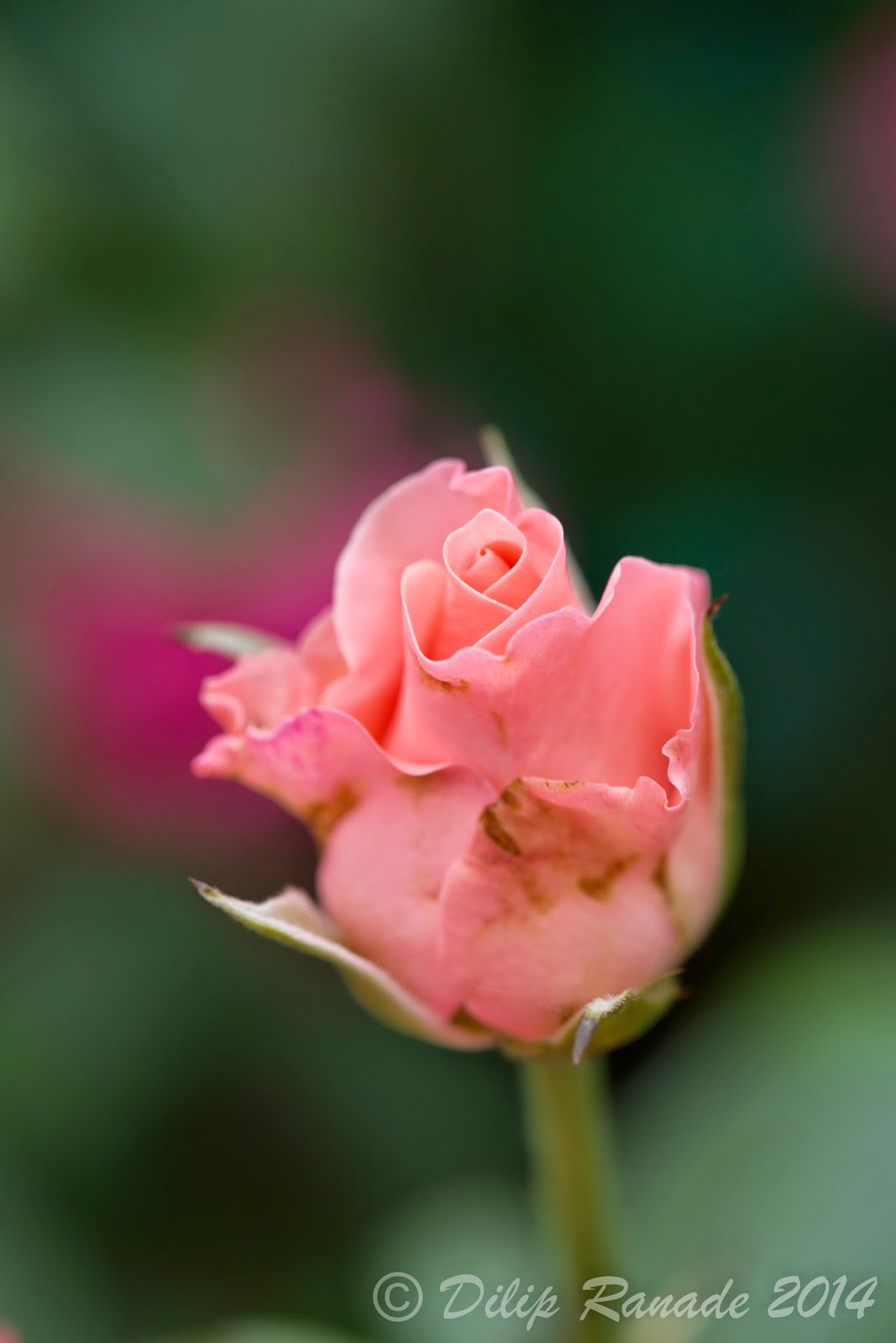 |
| Beware of imperfections in flowers. If you have a choice, select a different flower or try a different angle. |
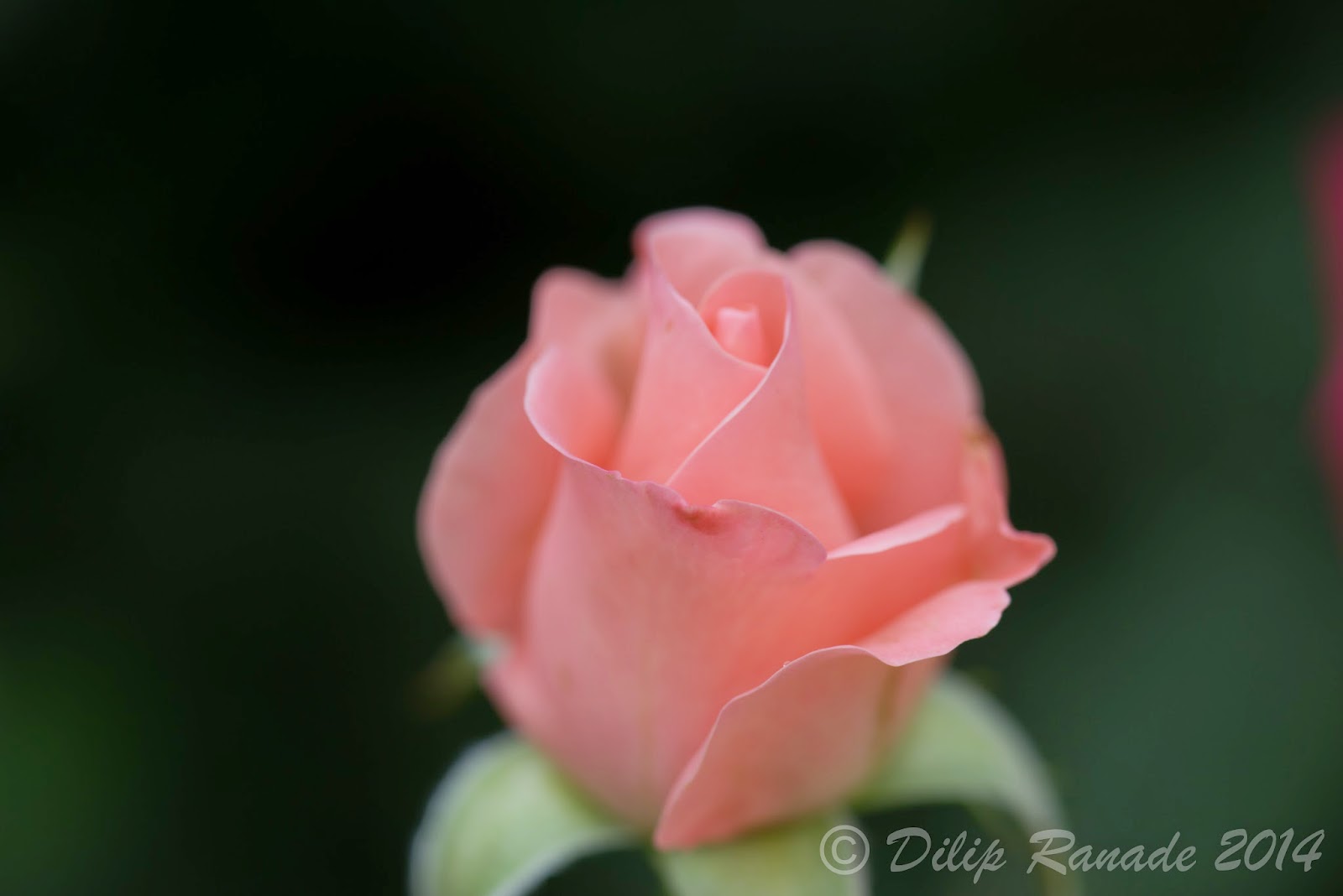 |
| This is the same flower. By changing the angle, I could get rid of the damaged petals |
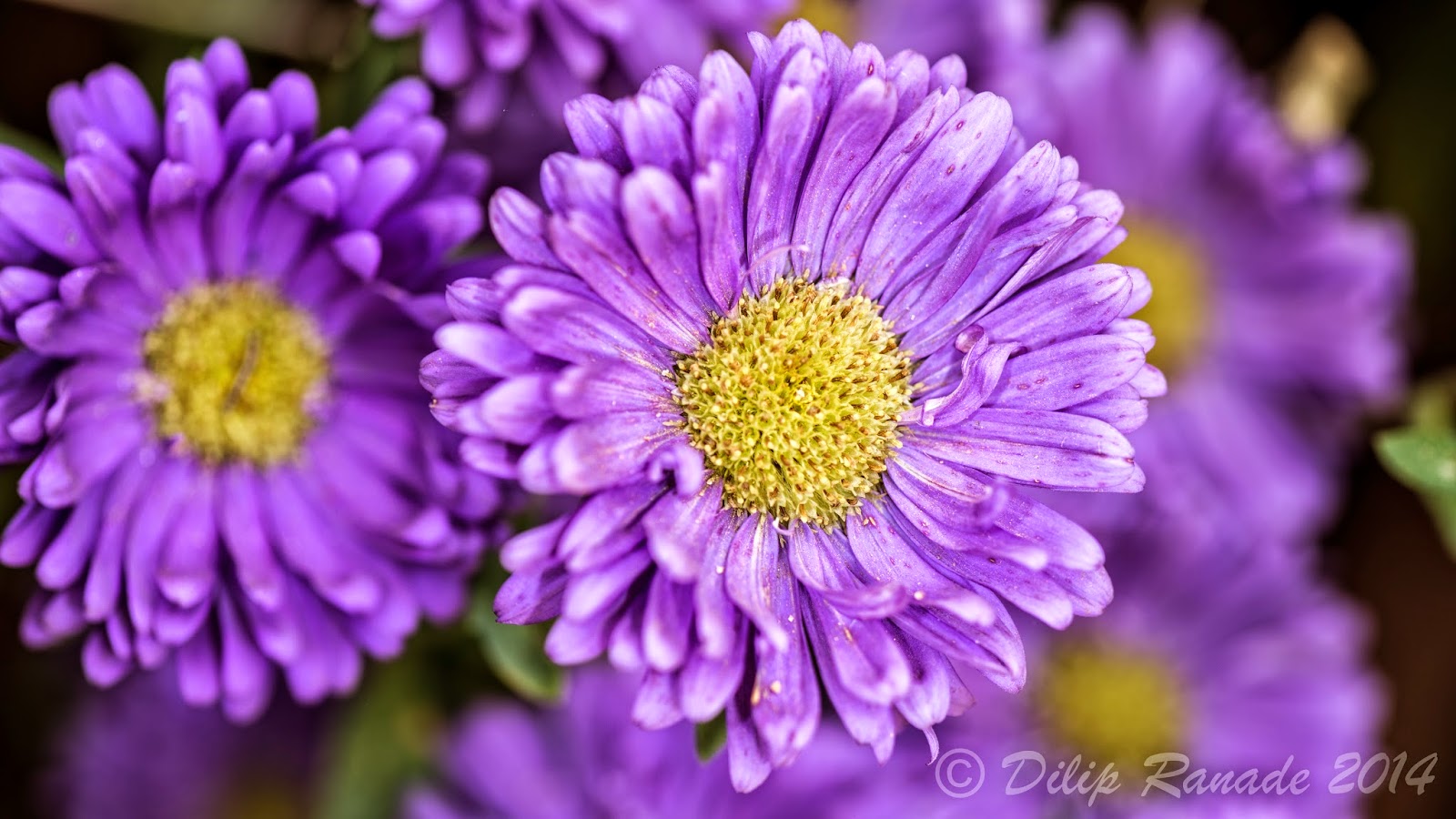 |
| Ensure that the flowers look fresh. |
|
2.Go close and compose with care: While capturing images of flowers, you will always get better results if you move as close to it as possible. This is particularly so if you are photographing small flowers. This makes your composition stronger and you will be able to bring out texture of the flower in greater detail. All compact cameras and Cell-phone cameras also offer a macro mode which help you to focus very close to the lens. Coming close will ensure better isolation of the selected flower.
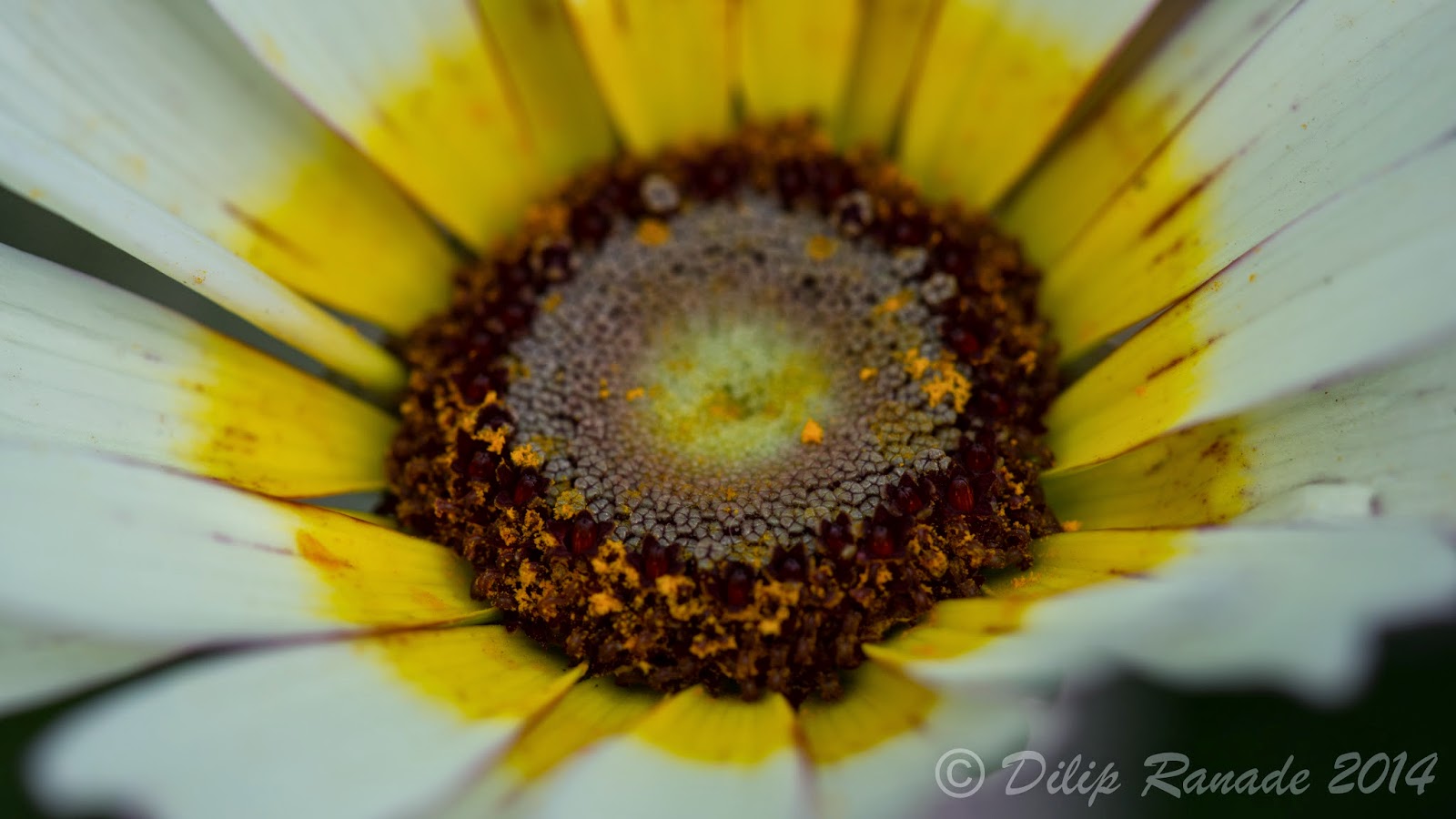 |
| Close-ups often bring out finer details in the flowers |
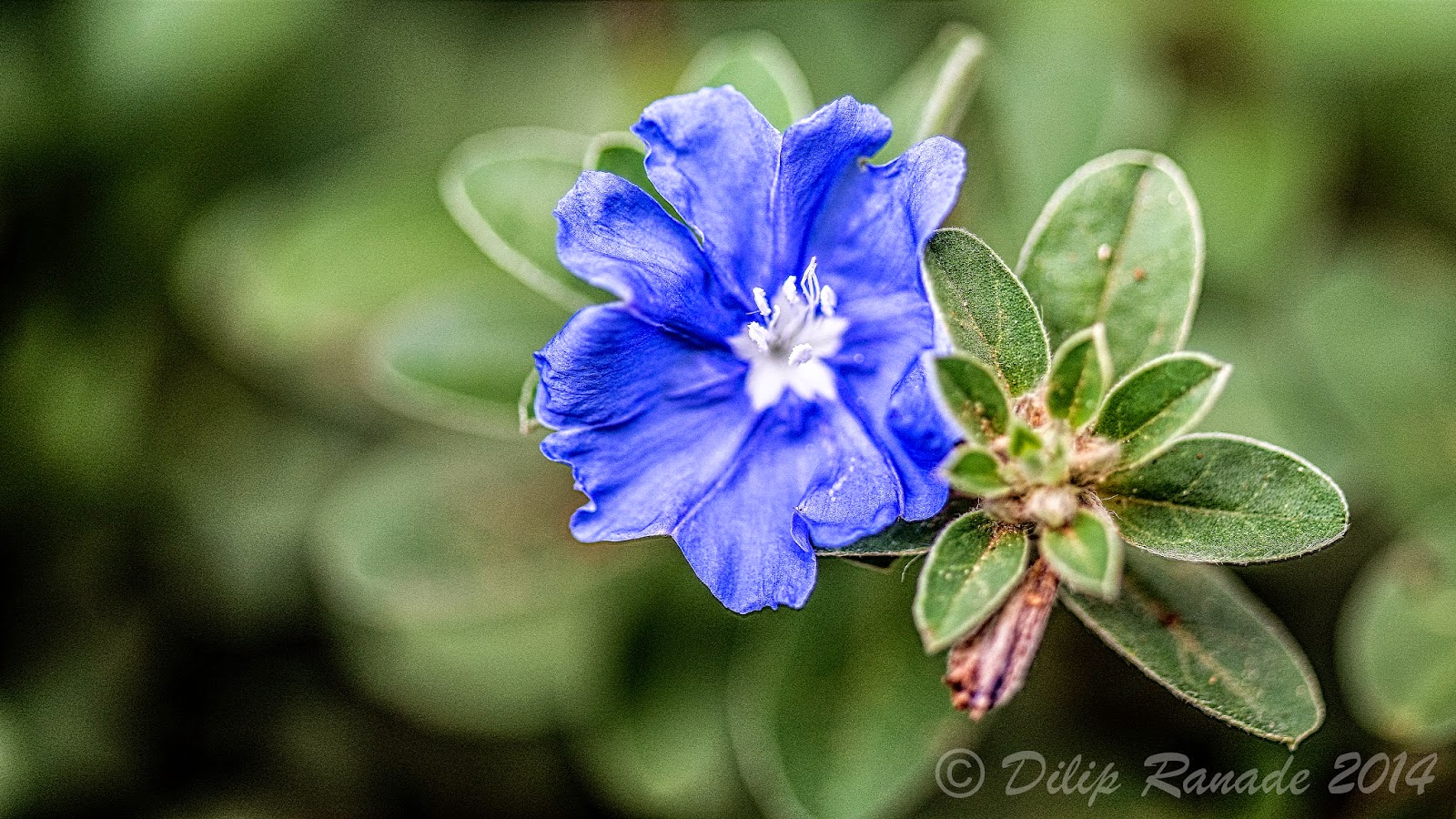 |
This flower was smaller than a Rupee coin. By moving closer I could get this result without any additional closeup equipment.
3.Isolate the flower from its surroundings: the flower you selected should not get lost in a maze of distracting background. Try to isolate and emphasize the flower you have selected by moving around and selecting a point of view which offers the least background clutter. This can also be achieved by moving in as close to the subject as possible. Those with cameras with adjustable aperture may select a wide open aperture to render the background out of focus. I will be covering this aspect in greater detail in a subsequent blog on depth of field. All DSLR and Bridge cameras offer an Aperture Priority Mode (Av mode in Canon and A mode in other cameras) Use this mode to select the widest aperture. I am avoiding a detailed discussion on aperture (or F/stops, as they are referred to) in this blog to keep it as simple as possible. |
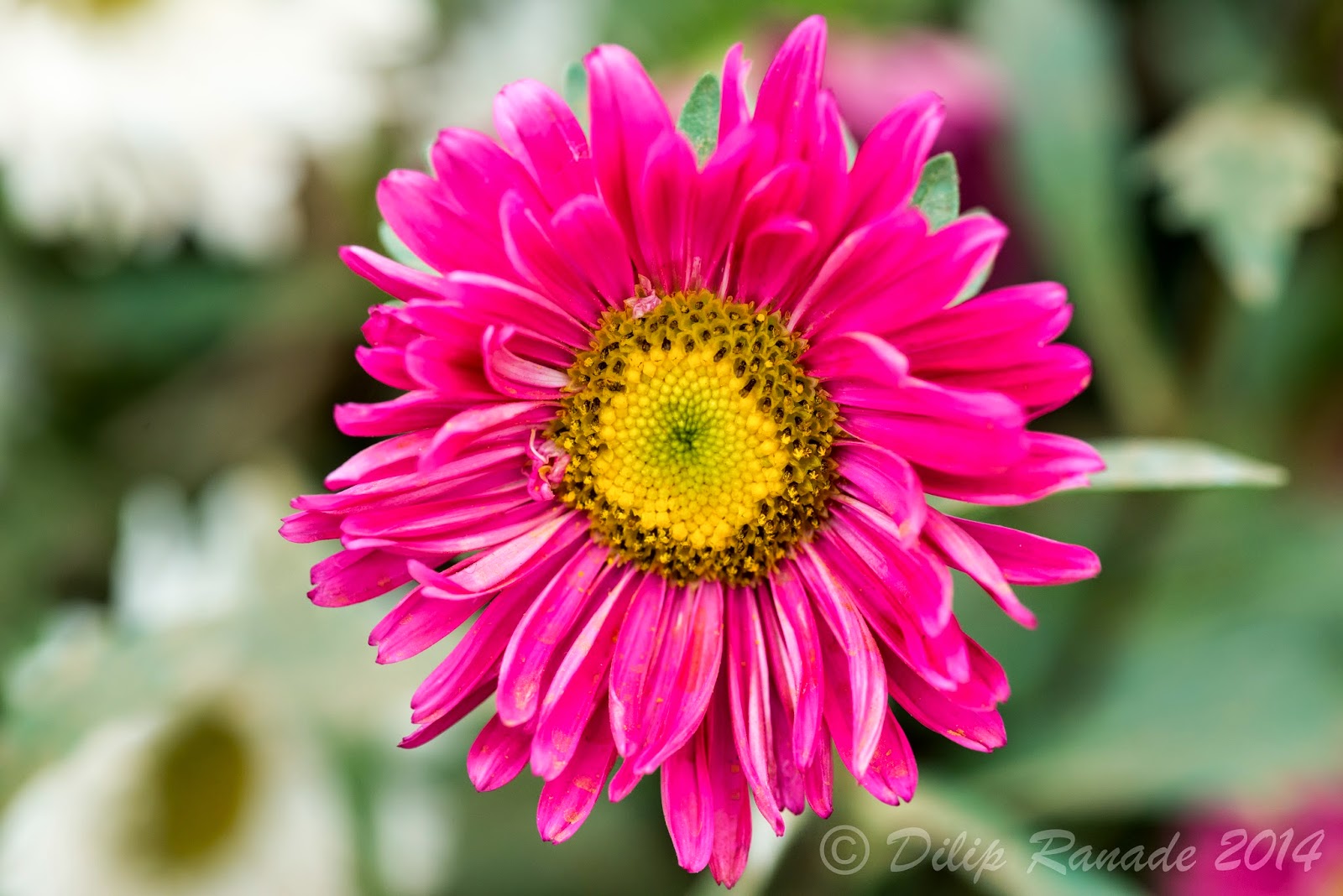 |
| Isolate the selected flower by moving in close and choosing an angle which offers a clutter free background. |
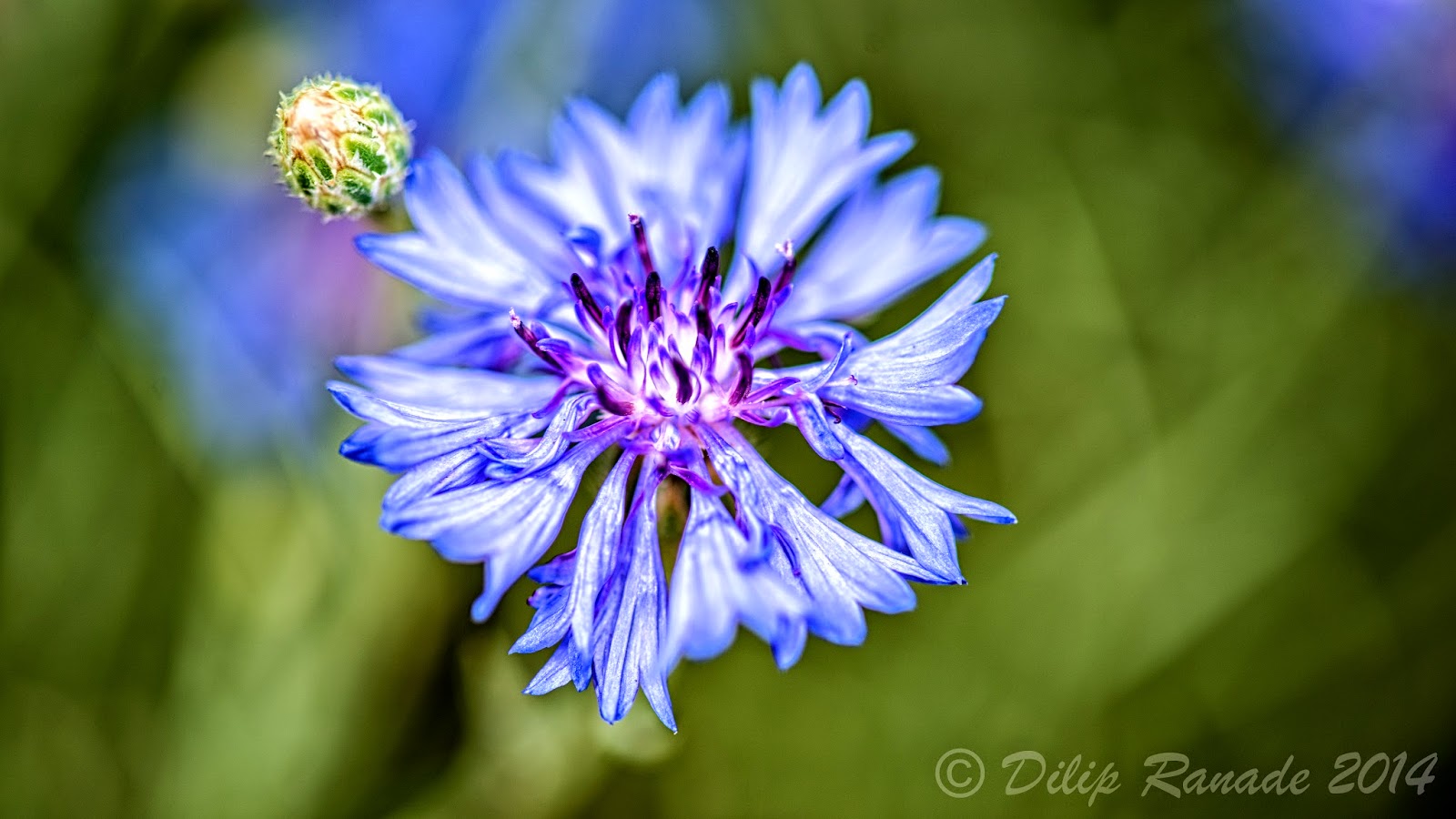 |
| This flower has been isolated from its background by moving closer and using a large aperture. |
4. Beware of breeze: Very often we get unsharp images of flower because of subject movement due to breeze. If you are shooting on a windy day, try to shield the flower you selected with a cardboard or an umbrella. If you have a camera which allows you to increase the
shutter speed (Tv mode in Canon and S mode in other cameras) , choose as fast a shutter speed as possible. If you have no control over the shutter speed or can not shield the selected flower, it will be better to wait till the wind subsides.
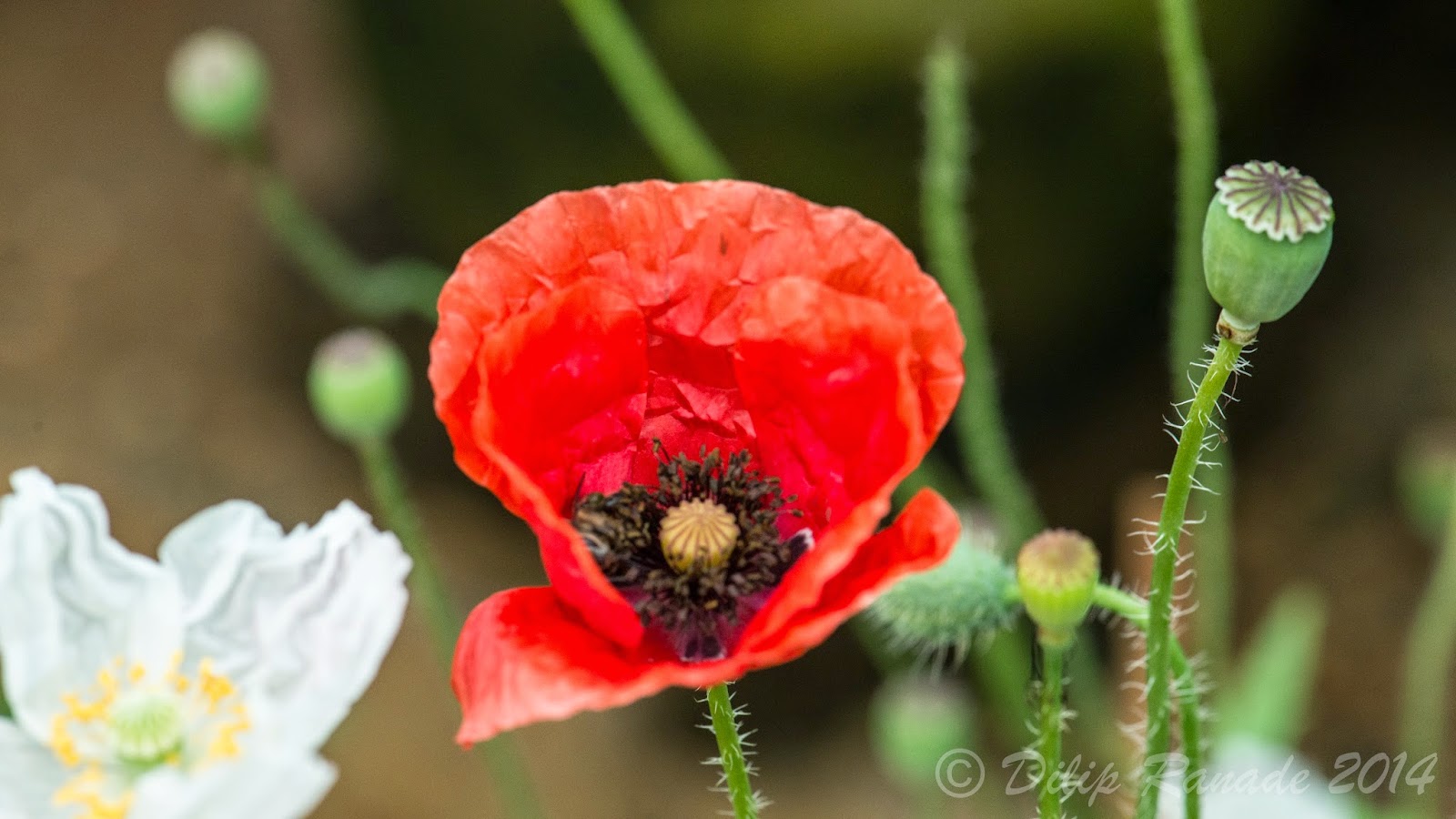 |
| Flowers with long slender stalks are more prone to movement due to breeze. |
5. Soft lighting and back-lighting are best for flower photography: For photographing flowers,
soft lighting is the best. An overcast day or shadows offer excellent soft light to bring out true colours of a flower. Avoid shooting flowers in harsh sunlight as this may result in harsh shadows. Do remember that harsh lighting may render the flower too contrasty and
the colors may not come out accurately. If necessary, you may use an
umbrella to shade the flower you are photographing. You may, however, also try
back-lighting (Light coming from behind the flower) to get some creative images. Back-lighting can bring out finer details and texture. Back-lighting may also add an attractive glow to the flower being photographed. If the back-light is too strong, you may have to use a
reflector or
fill-in flash to correctly expose the darker side of the flower.
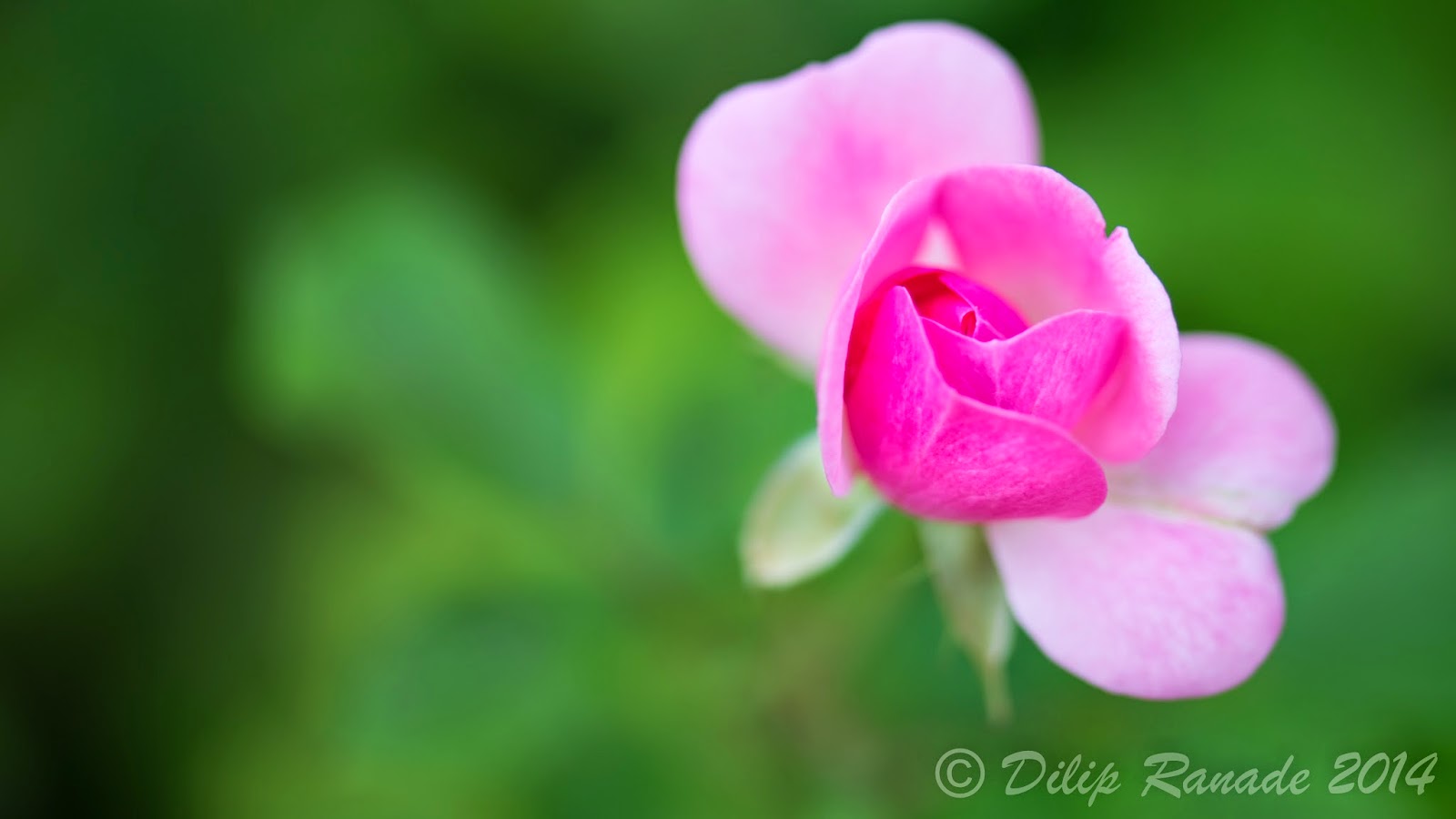 |
| Soft lighting is best for flower photography |
6.Dew drops: Dew drops can enhance the beauty of flowers. Select a proper angle to to ensure that the drops are contributing positively to the image. You may also spray water on the flower to get same effect. A few drops of water make the flowers look fresh.
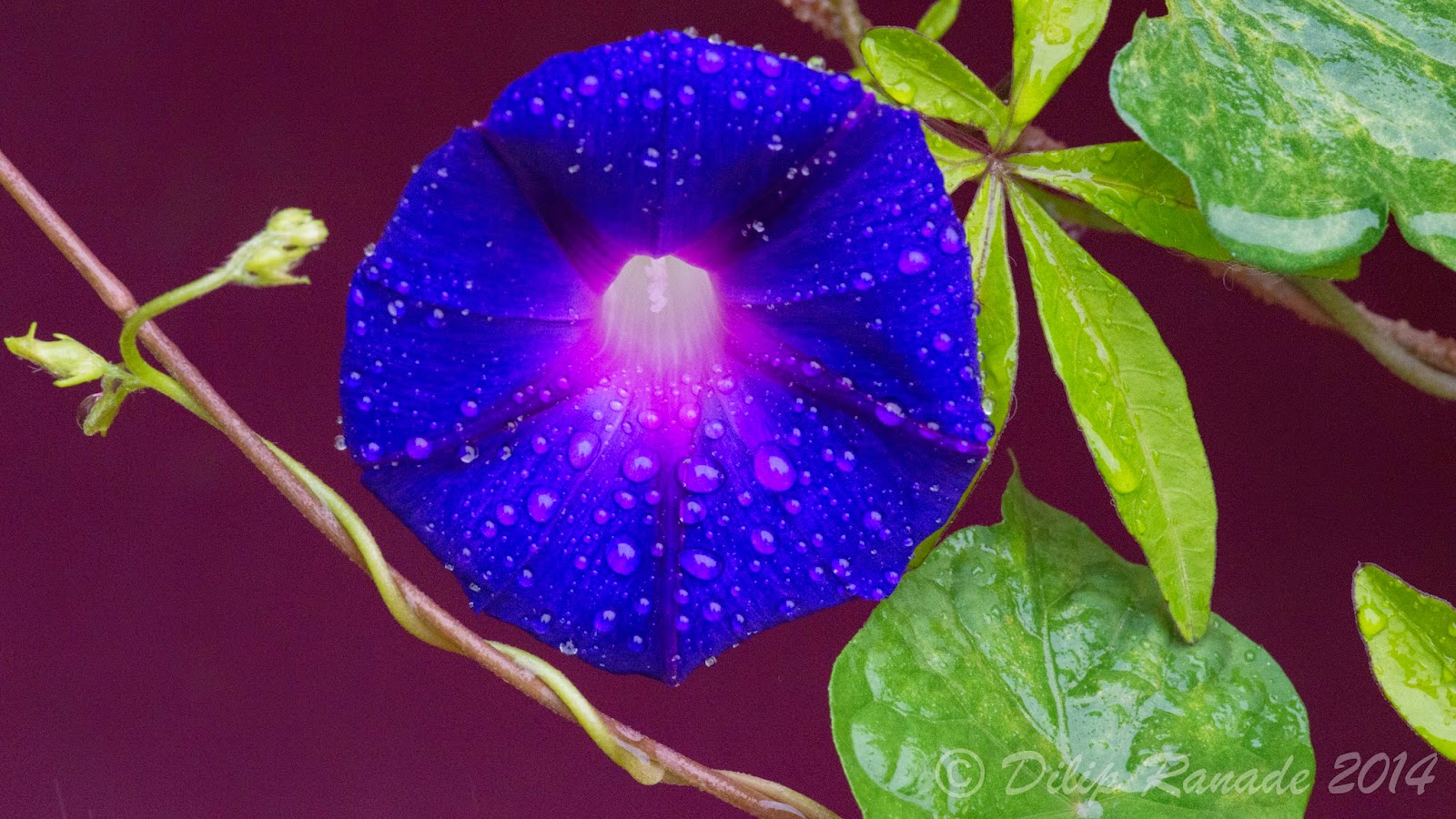 |
| Dew drops can enhance the beauty of your image |
7. Shooting angle: Shooting angle is a very important consideration when shooting flowers. Pointing the camera down to shoot flowers at ground level may lead to disappointing results. You surely need to bend, squat or even lie down to get good results. Visualize your image from different angles. The image below would not have been possible from standing position.
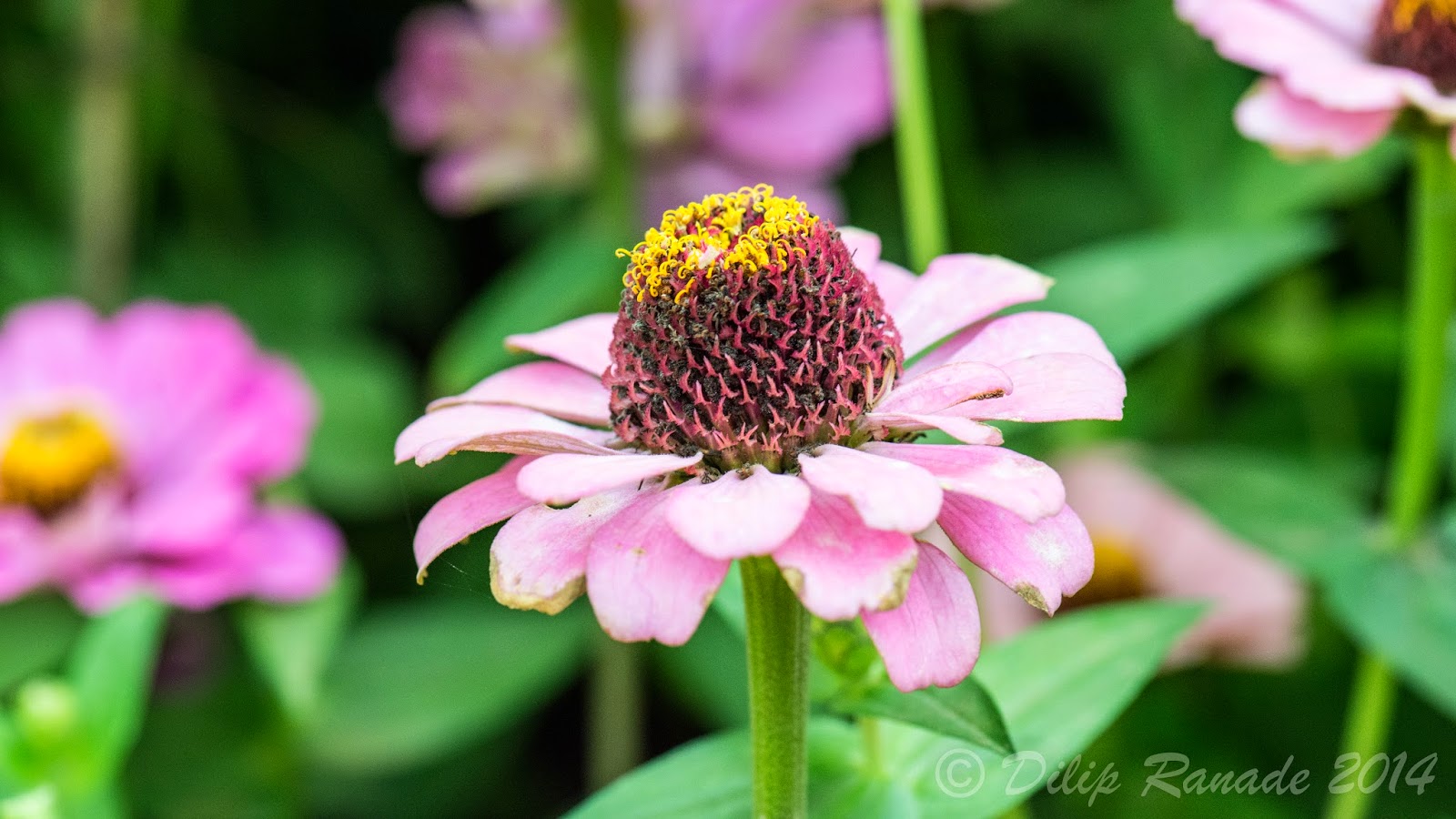 |
| Try different angles |
8. Crop your image: While photographing flowers it may not always be possible to compose your shot the way you might have desired. Very often you may get excellent results by
cropping the image in any photo-editing software. Cropping is a very simple process and can be done by anyone using commonly available software like
Picasa or
Paint. You may also find an image within an image by cropping. An example is shown below.
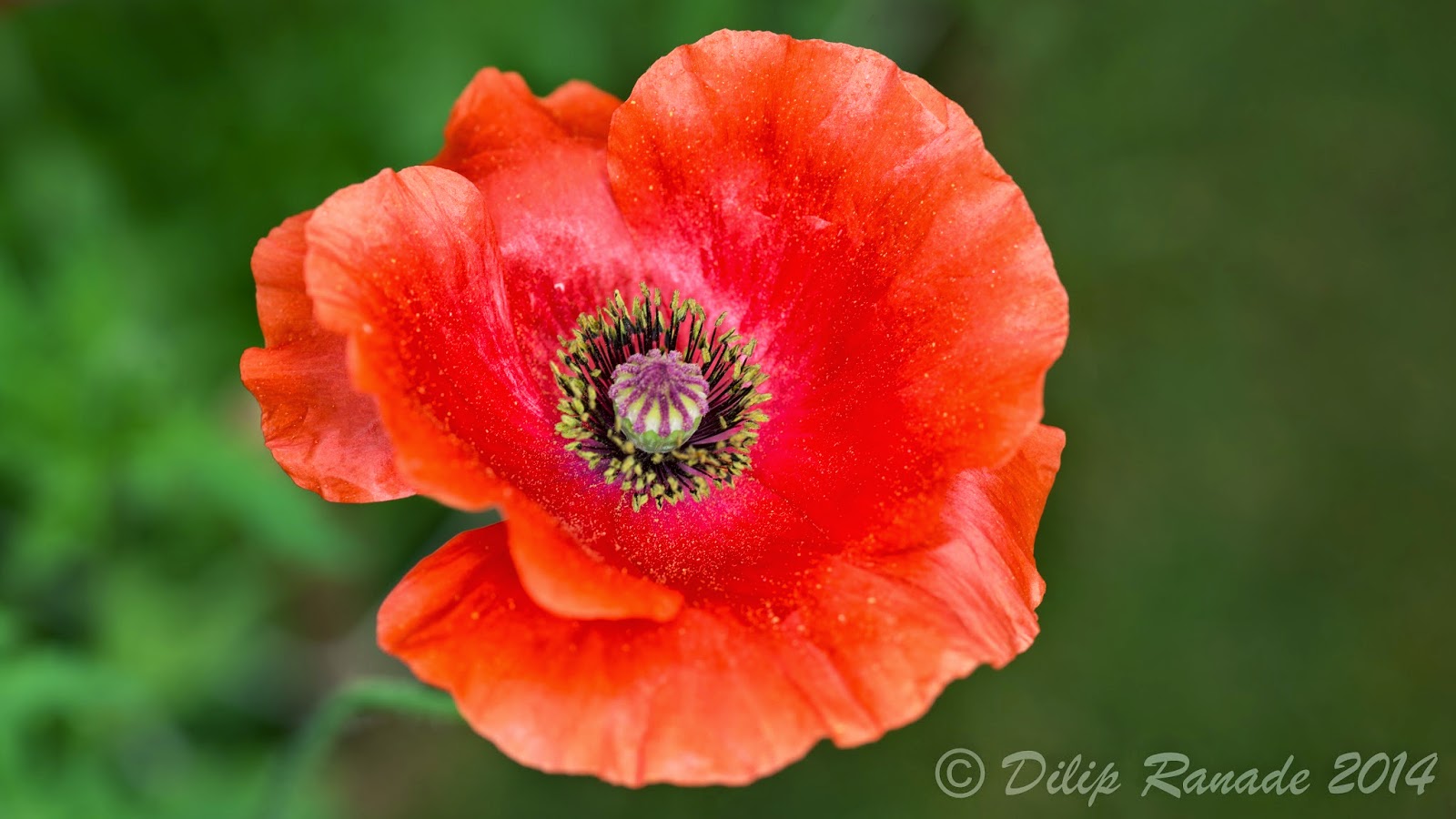 |
| Cropping can do wonders in some images |
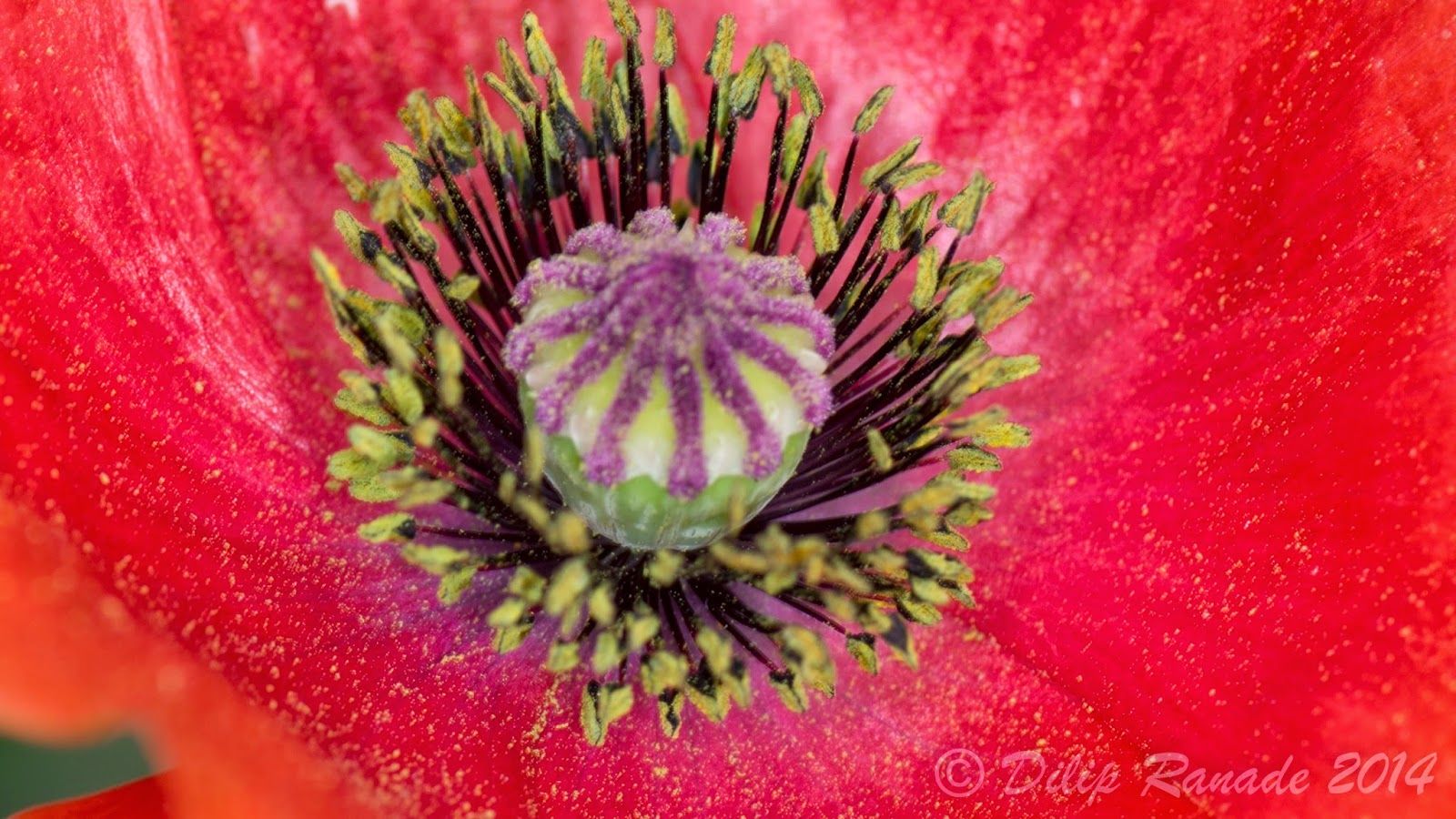 |
| This is a cropped version of the image above |
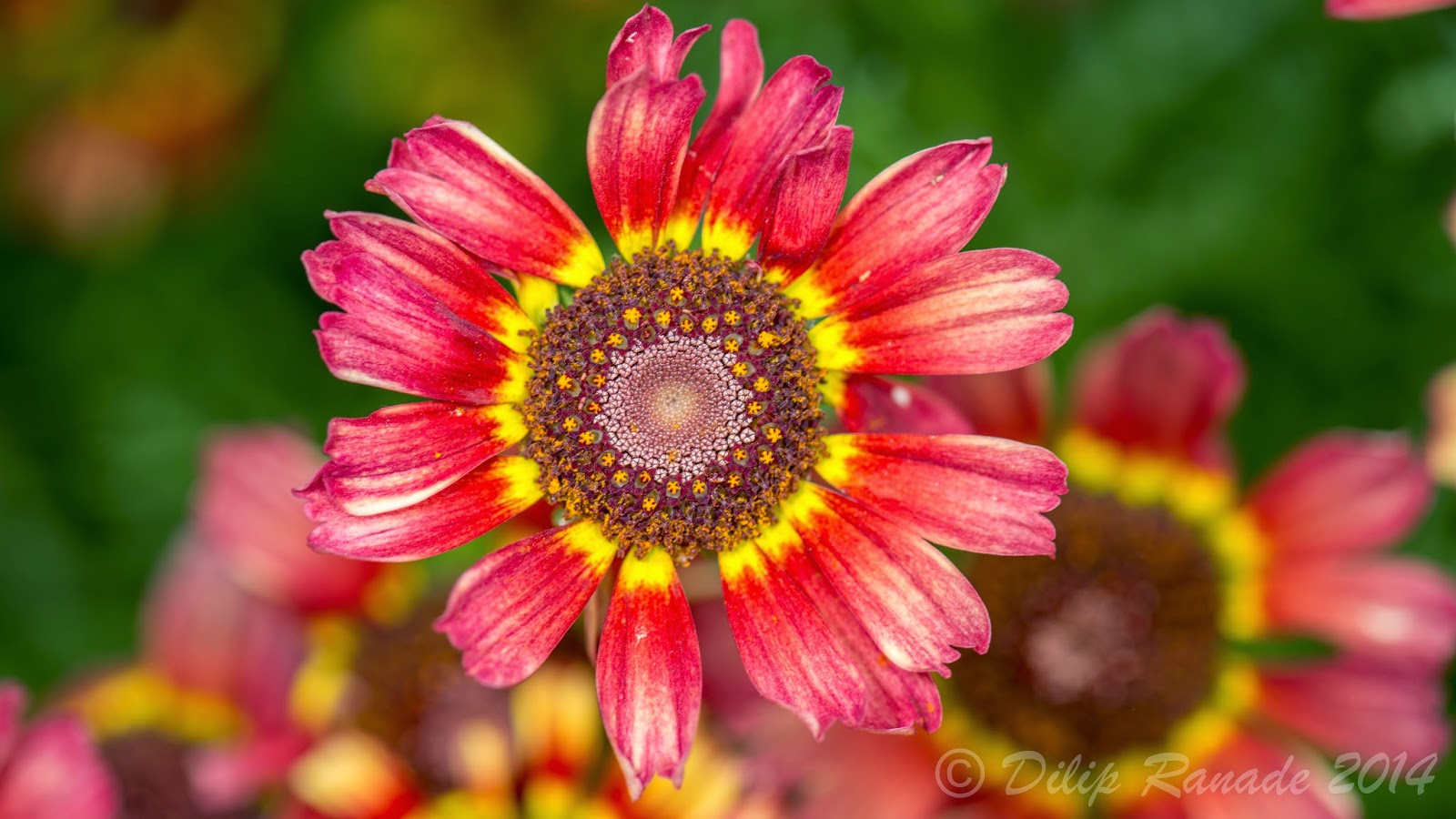 |
| Another example of cropping....the full image |
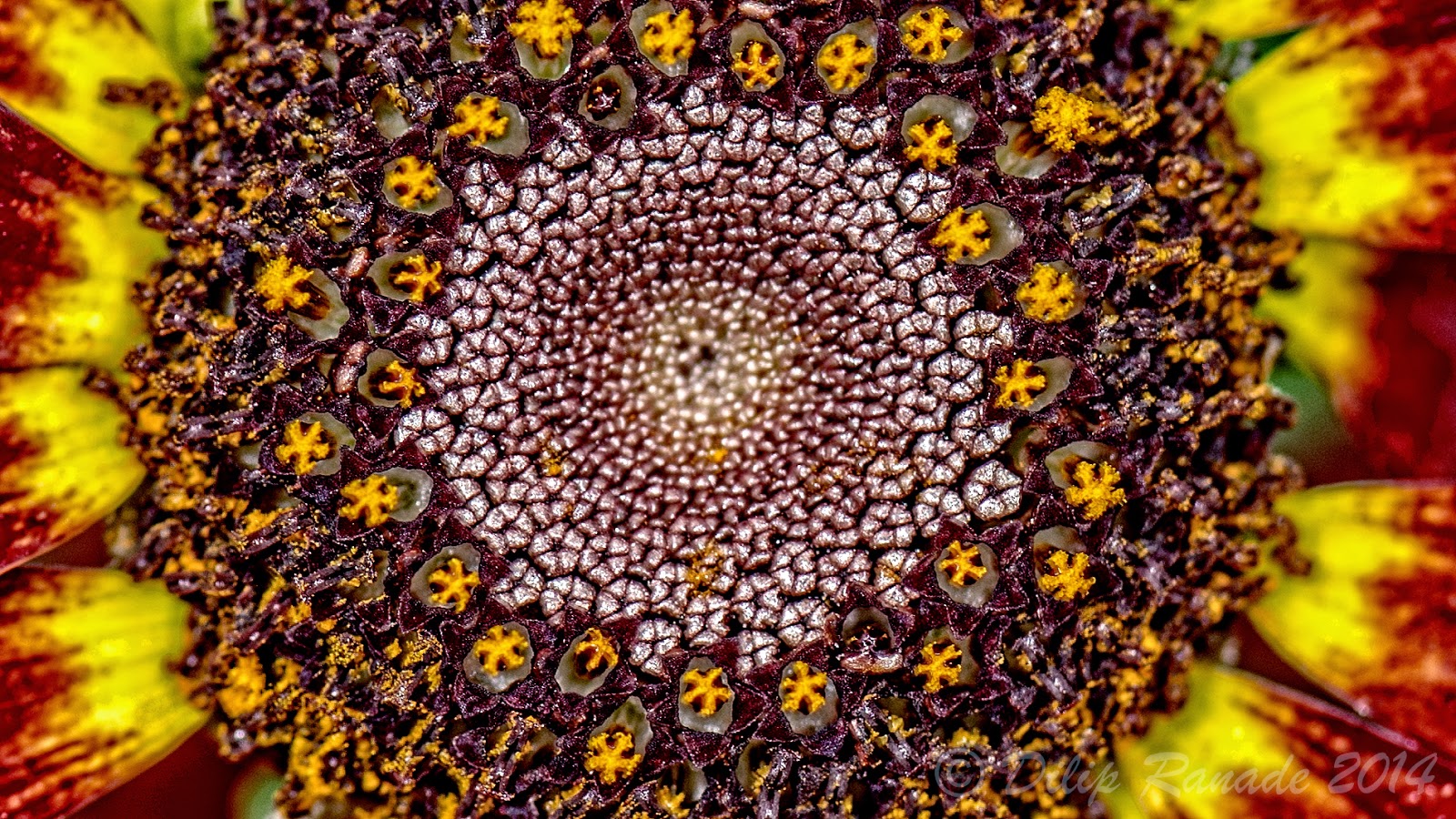 |
| .....and the cropped version |
9.Beware of colour variations in some colours Some colours do not reproduce accurately under harsh lighting conditions. Purple is one such colour. In many compact cameras this colour is rendered in varying hues depending on the lighting conditions. Diffused lighting as on an overcast day is recommended. Also, some colours like red, often blow out, if inaccurately exposed.
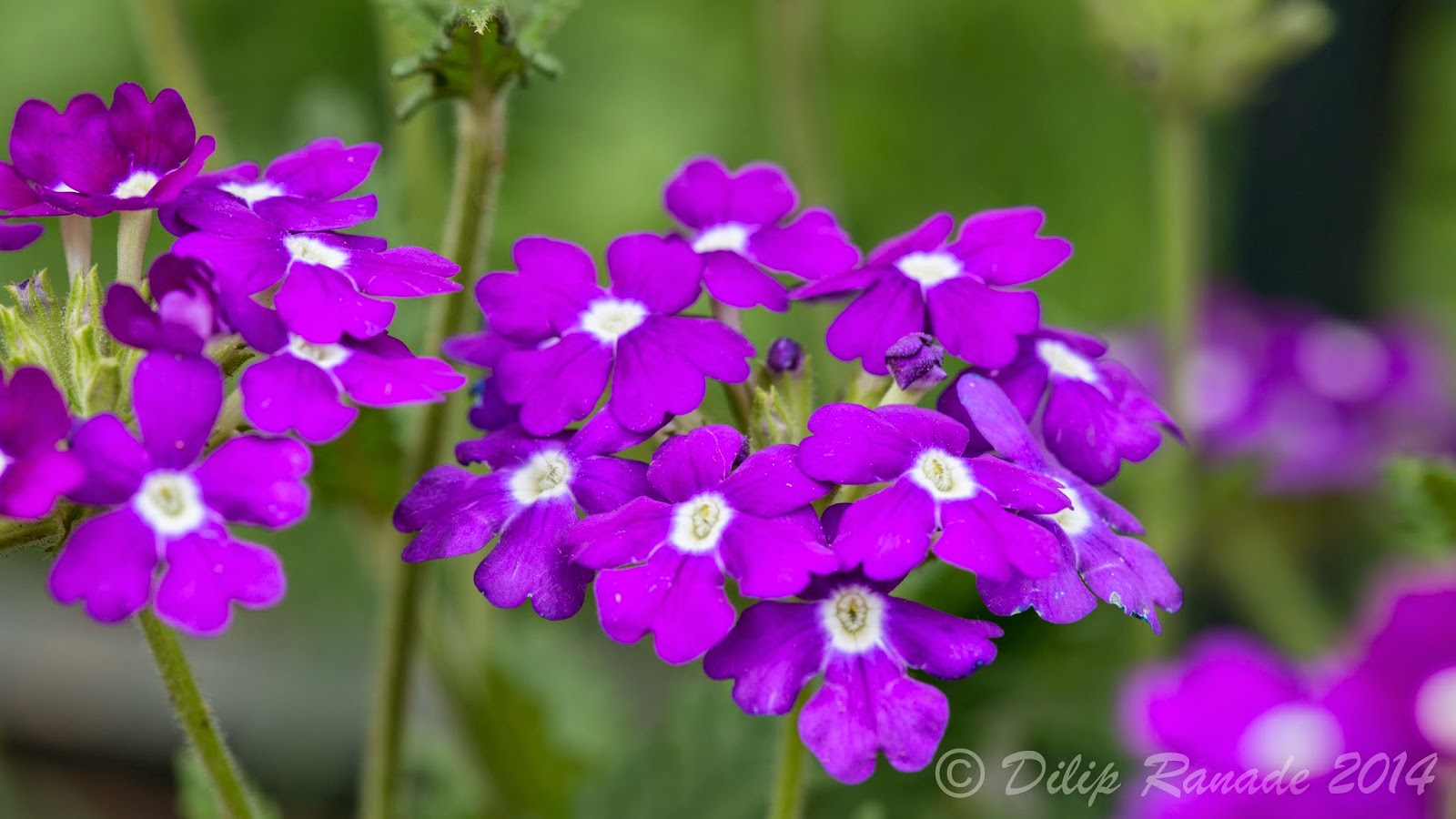 |
| Violets and purples are often reproduced inaccurately under harsh lighting conditions |
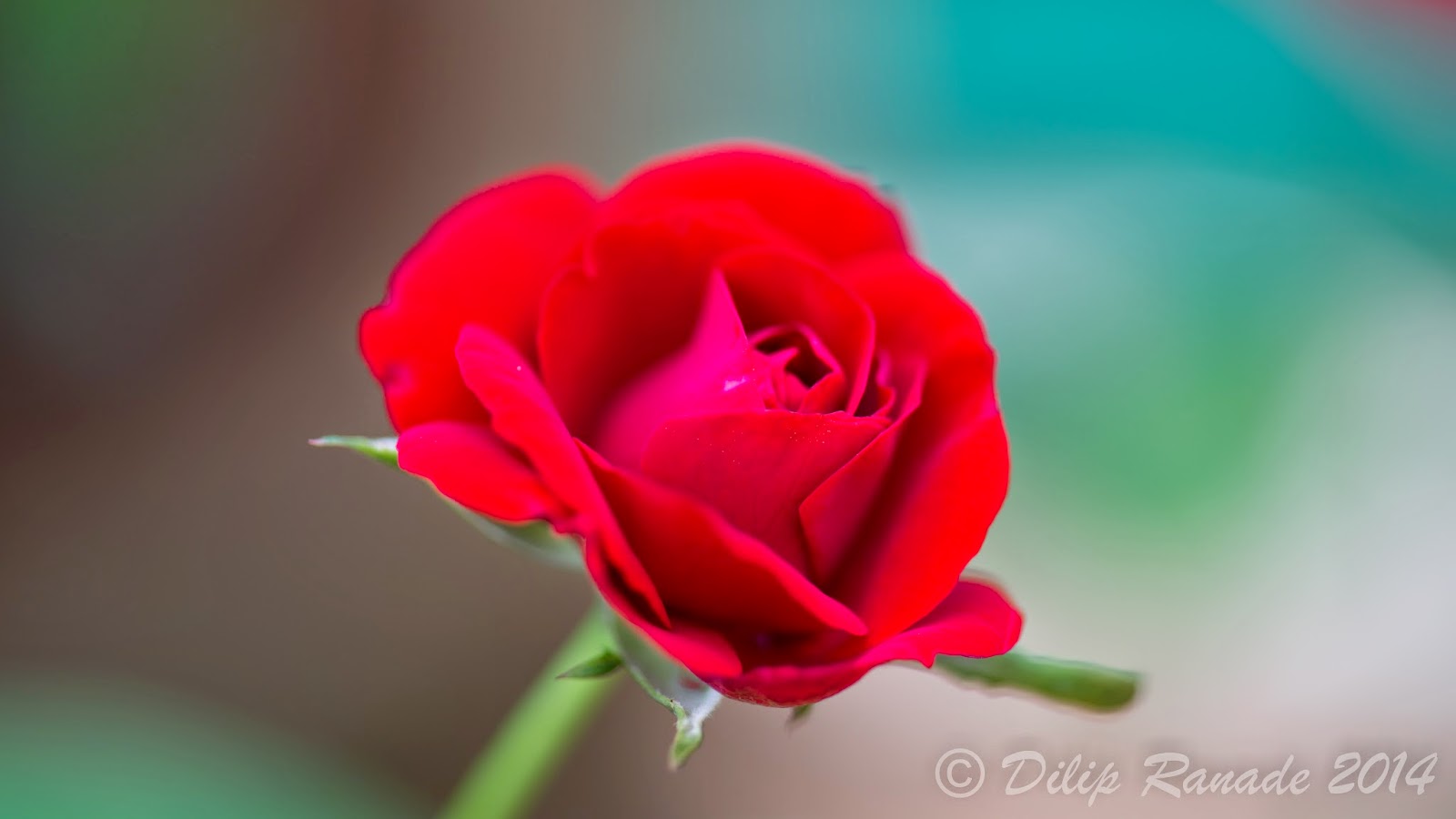 |
| Colours like red are prone to channel blow out if inaccurately exposed as in this picture. Note that the details in the red petals are lost and can not be recovered |
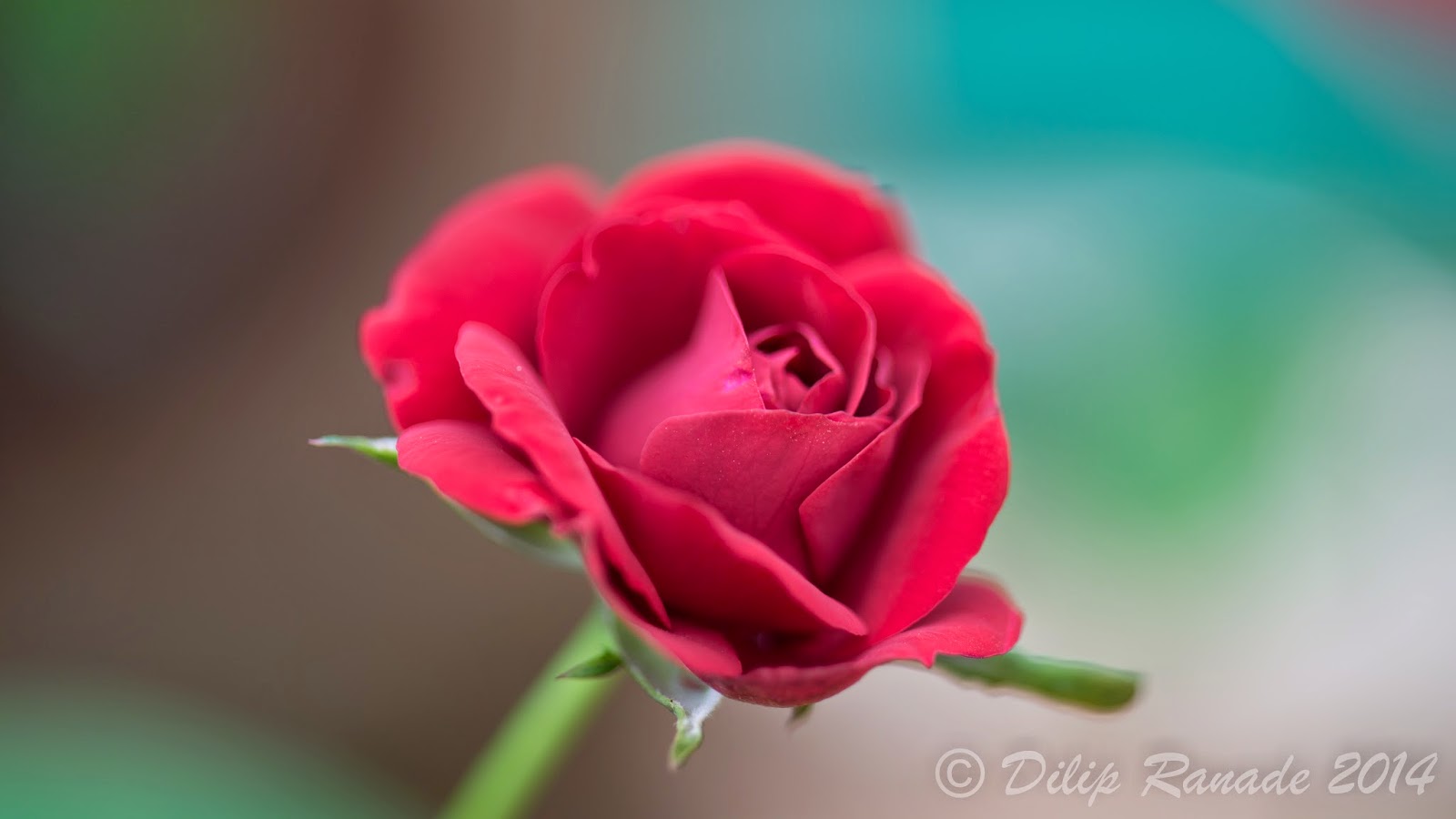 |
| By correctly exposing the same flower the details the petals are now restored |
10.Look out for bees and butterflies: Bees and butterflies add beauty to the pictures of flowers. While insect photography will be a topic for one of my future blogs, I am mentioning it here as they compliment flowers very well.
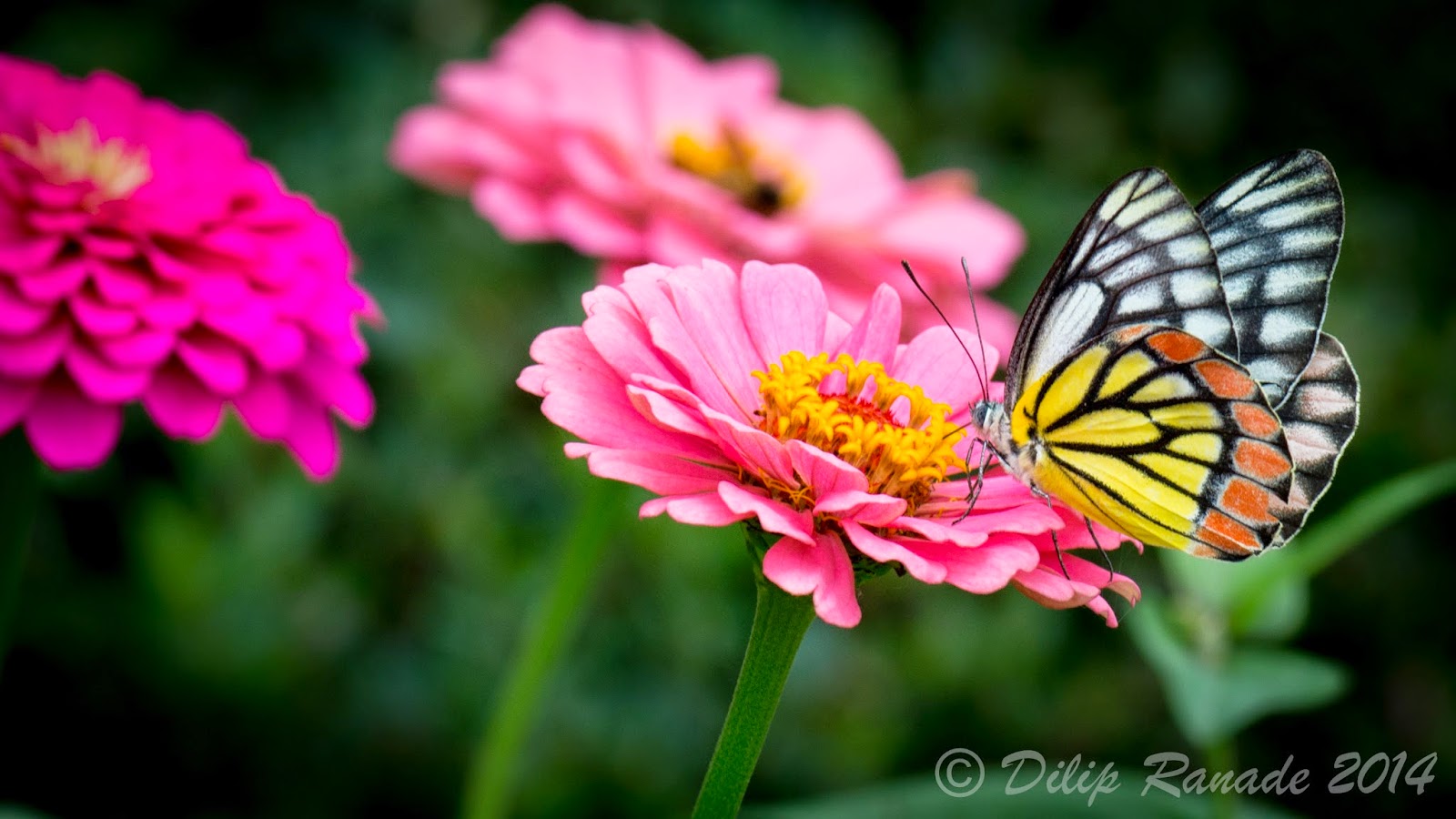 |
| Zoom in and be patient while photographing butterflies and bees on flowers |
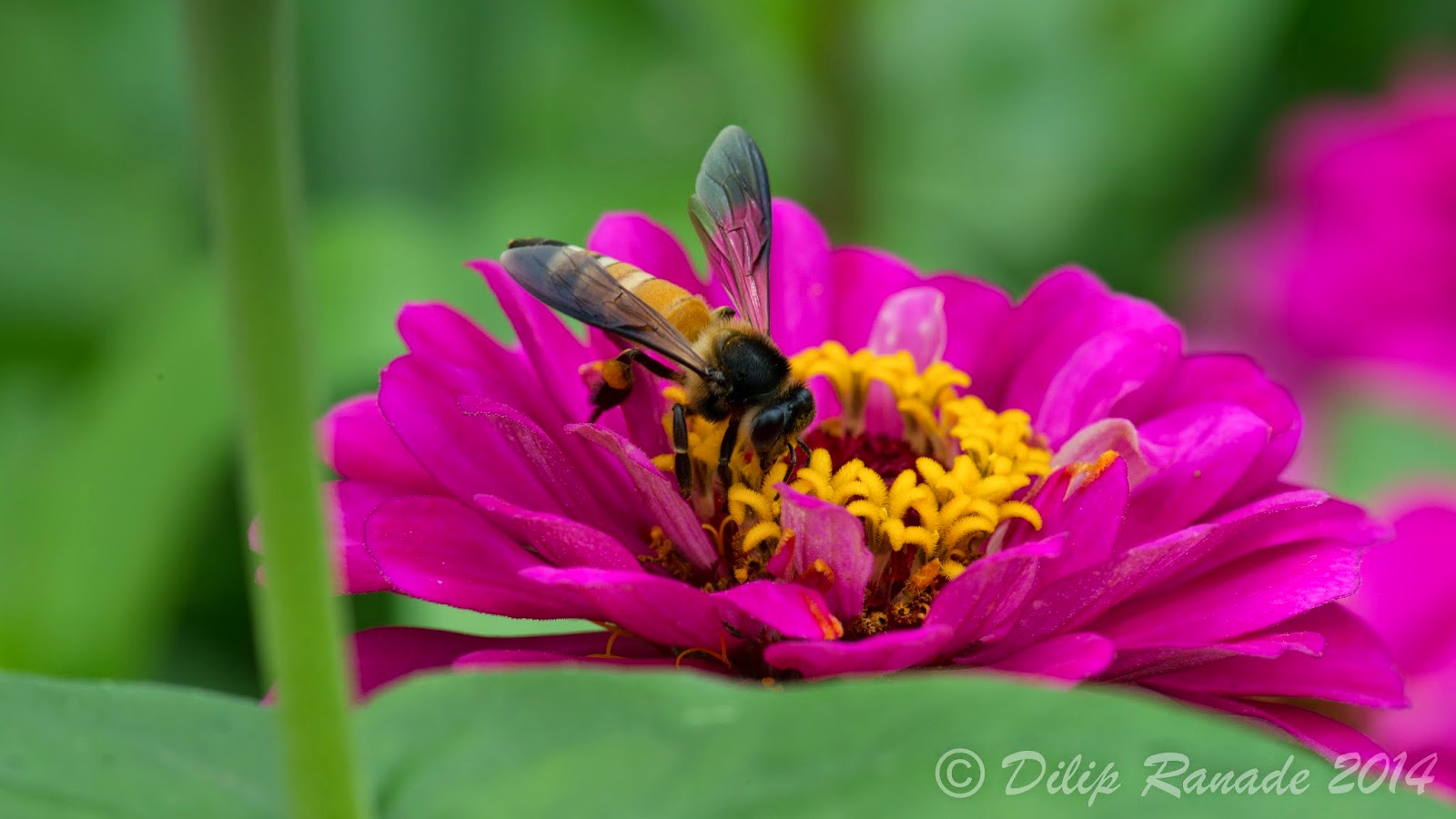 |
| Be patient and wait for the insect to settle down. | |




















No comments:
Post a Comment